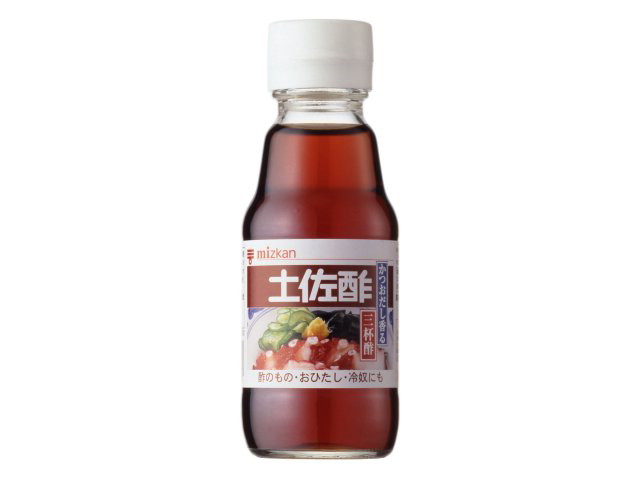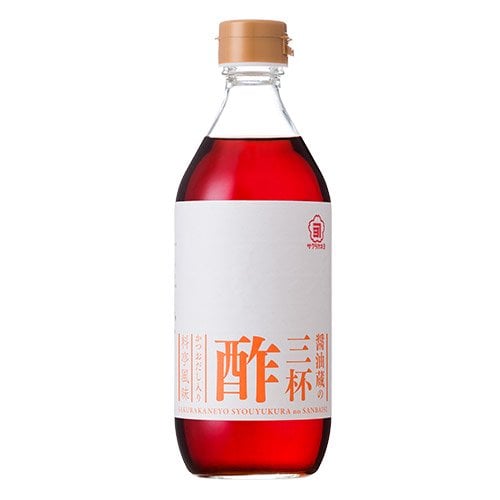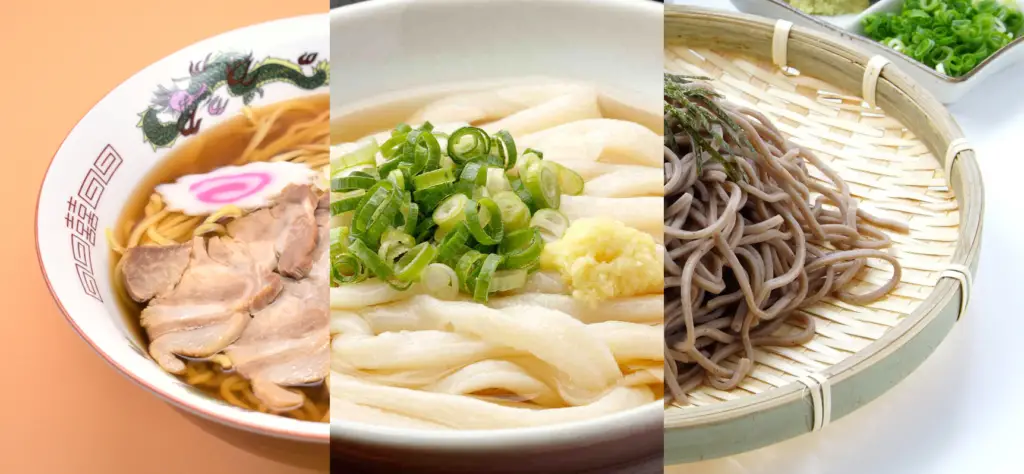
Udon vs soba vs ramen — what’s the difference?
In this article, I take a deep dive into the big three Japanese noodle types.
We will take a detailed look at each of the noodles:
- popularity,
- history,
- ingredients,
- variations,
- dish types,
- restaurants/pricing,
- and health/nutrition.
There is a lot of info here, so feel free to skip ahead to relevant sections using the table of contents:
Udon vs Soba vs Ramen
Let’s get started! First, a quick overview of each noodle:
Ramen noodles(中華麺)
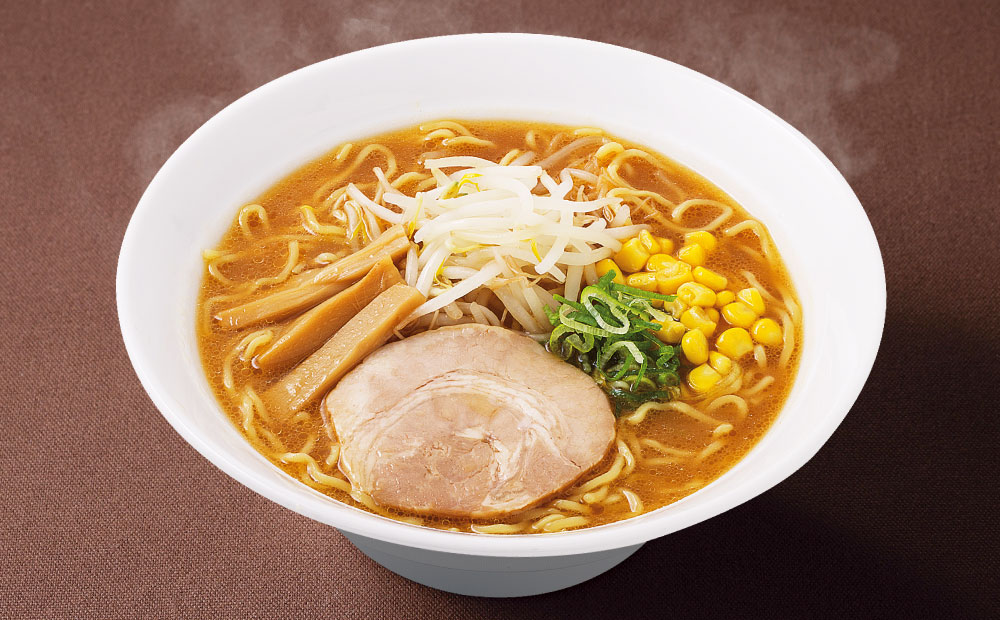
In Japan, the term “ramen” (ラーメン)refers to a type of dish — noodles served in a flavored soup with various toppings. The noodles typicaly used in ramen are called chuuka-men (中華麺) , which literally translates to “Chinese noodles”. In English, the noodles in ramen are generally just called “ramen noodles”. The noodles are also used in other popular Japanese dishes like yaki-soba, tsukemen, and hiyashi chuukamen.
Udon(うどん)
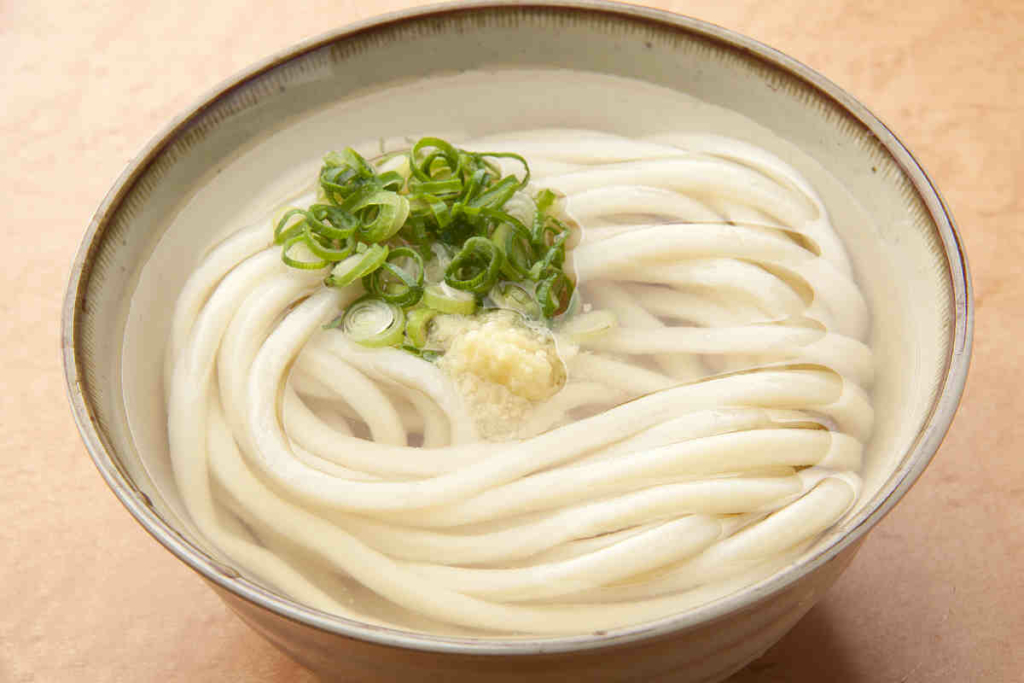
Udon is best known as a thick, soft, slightly chewy noodle that is commonly served either hot or cold. Its versatility means that it is popular to eat all year around. There are actually many variations of udon which we will take a look at later.
Soba(そば / 蕎麦)
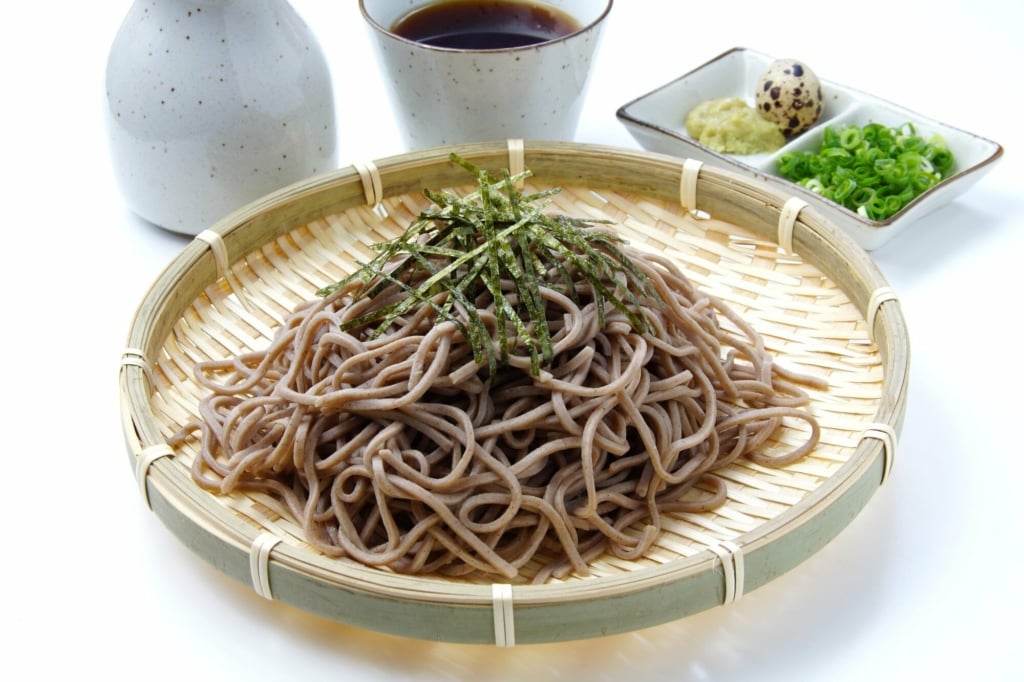
Soba is noodles made with buckwheat flour. The word “soba”(そば・蕎麦) literally means buckwheat (i.e. the plant). The full name of the noodle is “soba-kiri“(蕎麦切り・そばきり). This which translates to something like “cut/sliced buckwheat”.
There are many grades of soba depending on the flour used. Thus, soba is often found in high-end restaurants, as well as cheap street stalls.
The term “soba” is sometimes used as a generic term for various noodle dishes in Japan. For example, the popular “yaki-soba” (i.e. stir fried noodles) and “Okinawa soba” are actually made with ramen noodles (i.e. Chinese noodles 中華麺), not buckwheat noodles. It can all be a little bit confusing!
Popularity
Ramen is by far the most popular Japanese noodle type/dish. This is true inside Japan, as well as in other countries.
Udon and soba are nearly tied in popularity, although udon has a slight edge according to Google search data:
Google Search Trends
Here’s a graph of search trends in Japan for ramen (ラーメン), udon(うどん), and soba(そば).
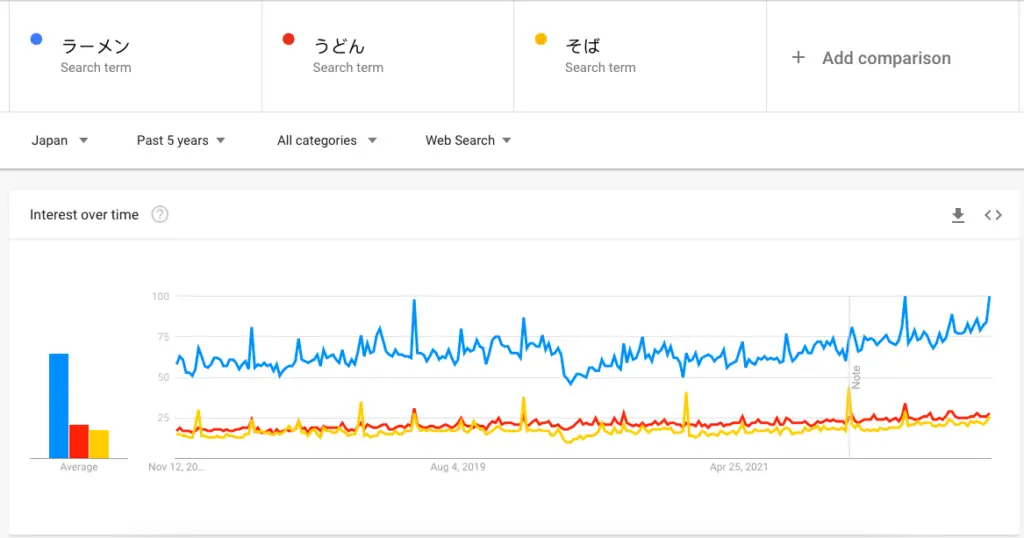
We can see that ramen (blue line) is searched for about three times more often than udon (red line) or soba (yellow line). Udon and soba are nearly identical, although udon has a slight edge overall. Soba has spikes in popularity during the new year, as many Japanese people traditionally eat toshikoshi soba (i.e. New Year’s soba) during that time.
- Note: In Japan, “ramen” technically refers to the dish, not the noodles themselves. The noodles used to make ramen are known as “Chinese noodles” or chuuka-men (中華麺)in Japanese. Nobody really searches for chuuka-men though.
In the United States, the difference is even more drastic. Ramen is searched for more than 10 times more often than udon or soba. Again, udon edges out soba for 2nd place:
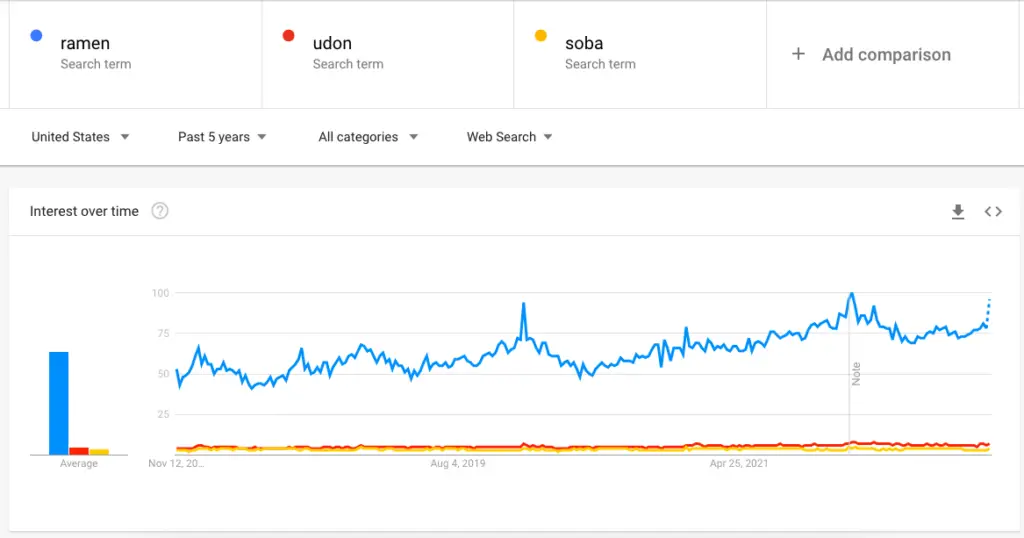
Number of restaurants
Another way to compare popularity is by the number of restaurants specializing in each type of noodle.
There are around 50,000 ramen restaurants in Japan (according to Tabelog). Udon has around 24,000 restaurants, and soba has about 25,000 restaurants.
So, in this case, soba edges out udon slightly for 2nd place. Many restaurants that serve udon, also serve soba, so there is probably a lot of overlap.
Soba (East) vs Udon (West)
One interesting note when comparing udon vs soba, is that soba is much more popular in eastern regions of Japan, while udon is more popular in the west. In fact, there is a saying in Japan that goes something like “East is soba, West is udon” (東は蕎麦、西はうどん).
Check out this map that shows regional popularity of soba (brown) and udon (blue):
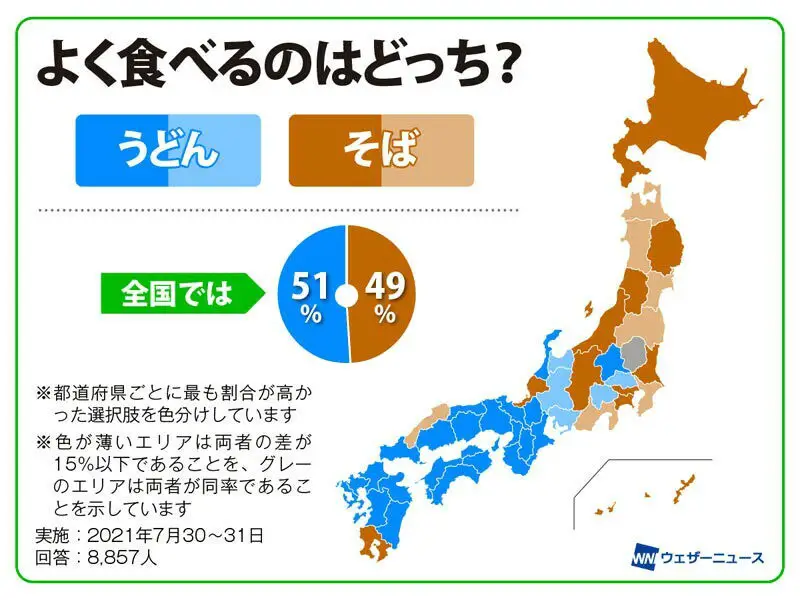
History / Origins
Now, let’s take a look at the history of each noodle:
Origin of Japanese ramen
The first recorded history of ramen in Japan was way back in the 15th century. It didn’t became popular until the 19th / early 20th century, when Japan opened its borders, and many Chinese settlers moved to Japan. The first Chinese restaurants were then opened in various port cities (most notably Yokahama), and the first bowls of ramen were served in Japan.
In fact, the term “ramen” originates from the Chinese word “拉麵”( simplified version: 拉面)which is roughly pronounced as “la-mian” in standard Mandarin. The meaning translates to “pulled noodles”, since the noodles were traditionally made by pulling/stretching the dough by hand. Many Japanese ramen shops will still use the traditional Chinese characters (i.e. kanji) “拉麵” on their store signs. These days, Japanese ramen noodles are usually made by cutting instead of pulling.
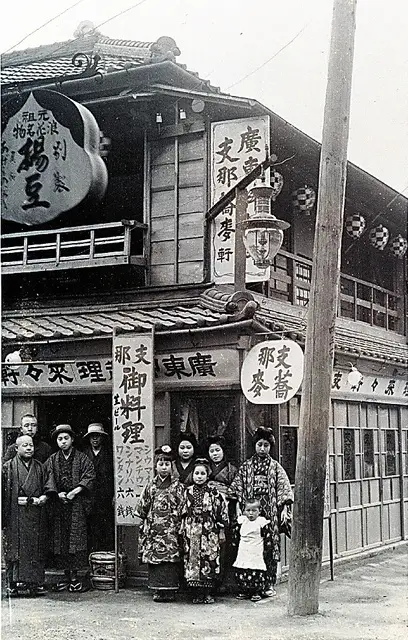
In 1910, the first “Japanese style” ramen shop was opened in Asakusa, Tokyo by a Mr. Kuniichi Ozaki.
It combined traditional elements of the Chinese version with ingredients and elements that catered to the taste of Japanese people. Sort of like a ‘fusion’ dish. From here, the modern day version of Japanese ramen was born.
Over time, Japanese ramen continued to evolve with various soup bases, toppings, and noodle types. It eventually became its very own cuisine, quite different from its Chinese origin. Instant / cup ramen was invented in 1958 to the delight of poor college students everywhere.
Origin of Udon
Udon is said to be the oldest of all noodle types in Japan.
It is not agreed upon on when it actually first appeared in Japan, although some theories state that an ancient form of udon was introduced from China as early as the Nara period (710 – 794 AD). As with all things in life, it evolved over time, and the modern version of udon was already widely popular during the Edo Period (1603 – 1868).
Some historians say the name is derived from the Chinese word 混沌 (hundun) — which is actually a sort of dumpling — and somehow eventually became “udon” over time. I’m not sure how that works, but this theory is not universally agreed upon. Others say the name was derived from another term used for “hand cut noodles”.
Origin of Soba
Soba noodles also have a very long history in Japan (although slightly shorter than udon’s).
The buckwheat plant was first used as a source of food during the Nara period (710-794) to make a sort of porridge. During the Kamakura period (1185-1333), stone mills were introduced from China, and buckwheat flour was able to be produced. The flour was first used to make buckwheat dumplings / cakes known as “soba-gaki” (蕎麦がき). You can think of these as like the great ancestor of soba noodles.
The first evidence of the “noodle” version of soba was in the Muromachi Period (1336 – 1573). It was considered an expensive/high class food that was only served to nobles. Over time, it became more common, and by the end of the Edo period (1603 – 1867 AD), soba noodles were widespread and eaten by common folk just like you and me.
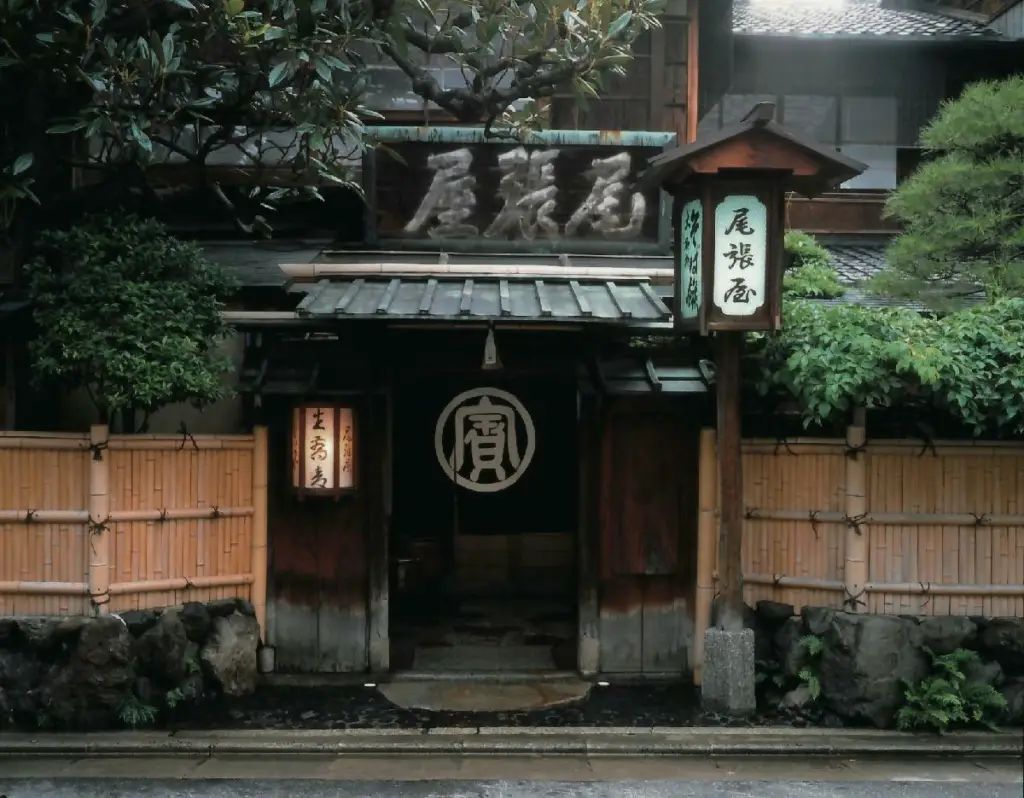
Interesting fact: The oldest soba shop still operating in Japan is from the Muromachi period. The shop’s name is Honke Owariya, and is located in Kyoto (imaged above: 本家尾張屋 本店). Check it out! https://honke-owariya.co.jp/en/.
Noodle Ingredients
Each noodle is made with a few basic ingredients. Udon is the simplest, while ramen and soba each add a unique ingredient. Let’s take a more detailed look:
What are ramen noodles made of?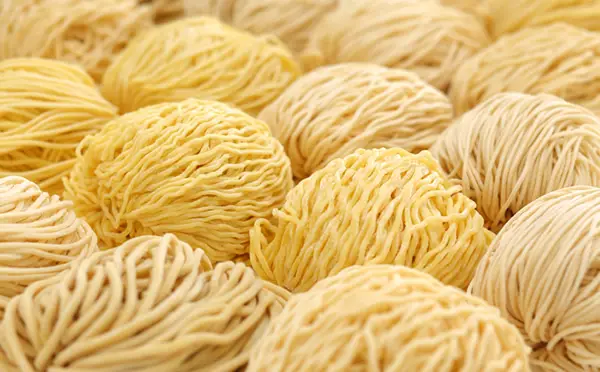
The actual ramen “noodles” are typically made of wheat flour, water, salt, and an alkaline solution known as “kansui” (かんすい). Sometimes, eggs are also used.
The kansui is unique to ramen, and is what gives the noodle its unique chewiness/elasticity, taste, and yellowish colour. Originally, kansui was sourced from naturally alkaline lake water, but these days it’s a manufactured solution.
What are udon noodles made of?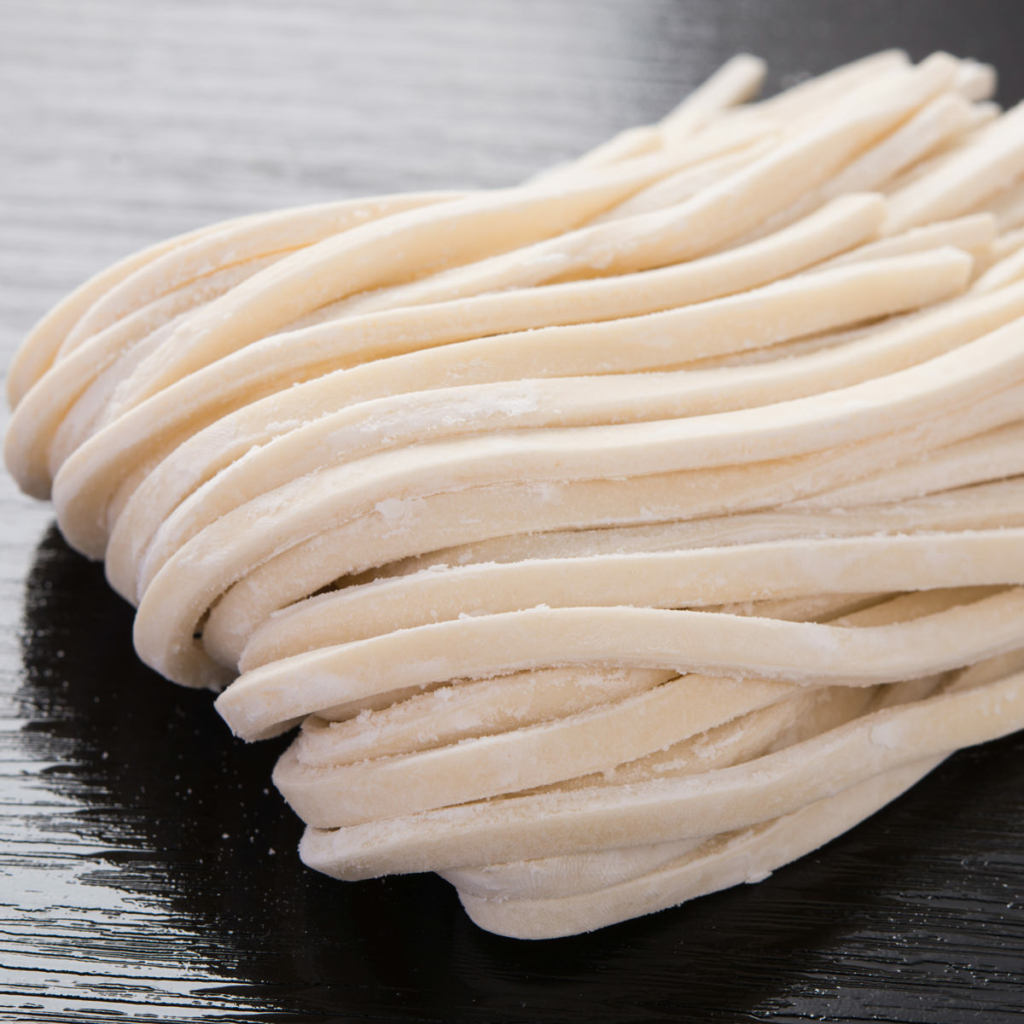
Udon noodles are simply made of wheat flour, water, and salt.
More specifically, a medium-strength wheat flour is used. This allows for the right amount of gluten formation to give the soft, light, chewy and slightly elastic texture that characterizes good udon noodles. The wheat flour also gives udon its slightly sweet fragrance and taste.
These days, most flour used to produce udon is actually imported from Australia, as Japan does not produce enough wheat domestically.
What are soba noodles made of?
Soba noodles are made of buckwheat flour, water, and usually a “binding” ingredient (called “tsunagi” 繋ぎ・つなぎ). Noodles are traditionally formed by cutting the dough into strips, as opposed to stretching out by hand. Typically, a specialized noodle knife called soba-kiri is used for cutting.
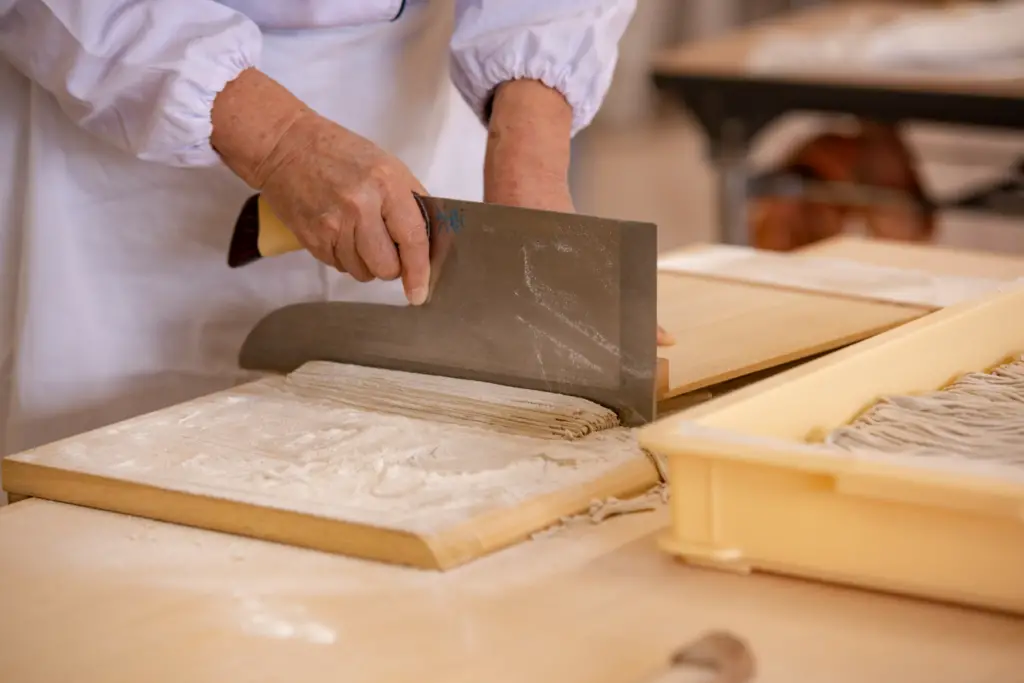
About soba tsunagi
Unlike typical wheat flour, buckwheat flour does not naturally have gluten, so it is difficult to cut the dough into noodles without everything falling apart. Therefore, a starchy binding ingredient (i.e. tsnuagi つなぎ) is often added to make the soba making process easier.
The most common binder is usually just plain wheat flour. So, unless explicity stated, most buckwheat noodles are actually not 100% buckwheat. In fact, according to Japan’s FCC for noodles, fresh/raw soba only needs to have a minimum of 30% buckwheat flour to be considered as soba. Many cheaper, dried soba that you can buy at supermarket may contain only around 20% or less buckwheat.
For you gluten free people out there, don’t worry. Some popular non-wheat binders include egg, yam, seaweed (funori), mugwort and burdock roots. To make real 100% buckwheat flour soba (known as ju-wari soba 十割蕎麦) takes a lot of skill and time, and is thus more expensive and actually quite rare.
Noodle type variations
There are many different types of udon and soba based on specific ingredients used, and region of Japan. On the other hand, ramen does not really have any offical types.
Let’s take a more detailed look:
Ramen noodle types
There are no official standards as to what actually constitutes a ramen noodle (中華麺). They can vary in length, thickness, and straightness/wavyness depending on the restaurant or shop you buy from. Some restaurants will also let you choose the thickness of the noodle, as well as how hard/soft you want it cooked.
Ramen is better known by the way it is served. See the types of ramen dishes in the next section.
Udon noodle types
There are many official types/categories of udon noodles. The main way to categorize udon is usually by the region of Japan it is from. Each type of udon has unique texture, size, and shape. Some are fat, some are thin, some are round, and some are flat!
There are too many types of udon to list here, but the so called “Big 3” udon noodle types are “Sanuki“, “Inaniwa“, and “Goto“.
Sanuki Udon (讃岐うどん)
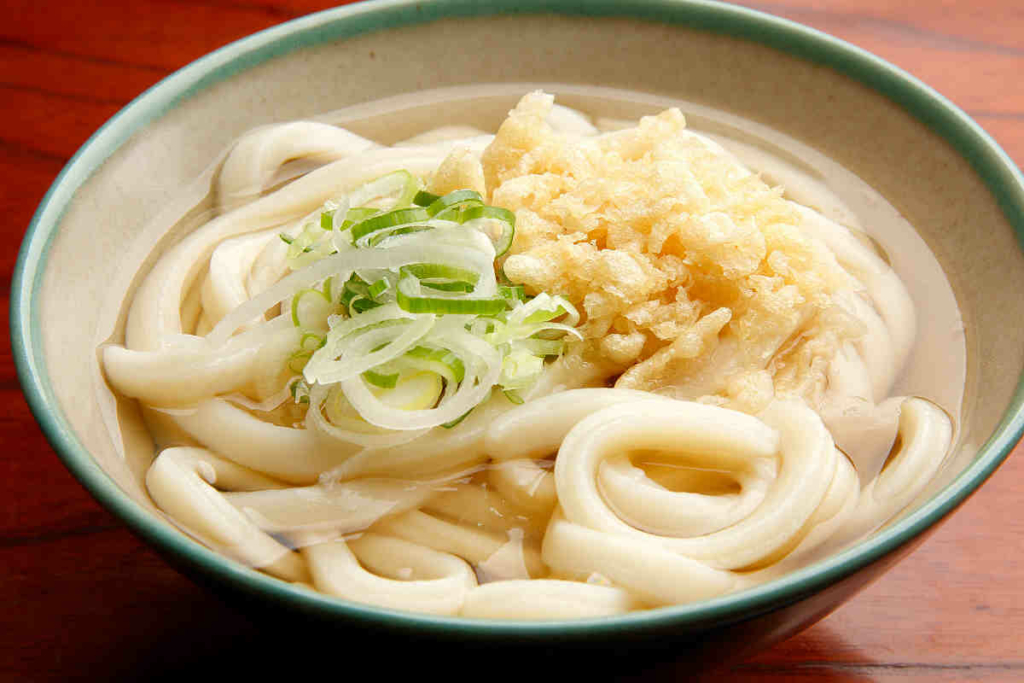
Sanuki udon is the most famous type of udon in all of Japan. When you think of udon, you are probably thinking of Sanuki udon.
It originates from the small city of Sanuki in Kagawa prefecture, where the dry climate and land is more suitable for growing wheat (as opposed to rice). The area is also next to the inland sea which is a high quality salt producing area. As a result of having these two raw ingredients, udon became a staple food of the area, and Sanuki udon was born.
These days, Kagawa is still considered the home of udon in all of Japan, and is sometimes referred to as the “udon prefecture”.
Sanuki udon is characterized by its shiny and transparent white color. The noodles are usually around 3mm in width. They are traditionally made by flattening and cutting the noddle dough by hand which gives it a concave, squarish cross section shape. Sanuki udon is best known for its chewy texture, strong elasticity, and the smooth feeling when you slurp the noodles down.
Inaniwa udon (稲庭うどん)
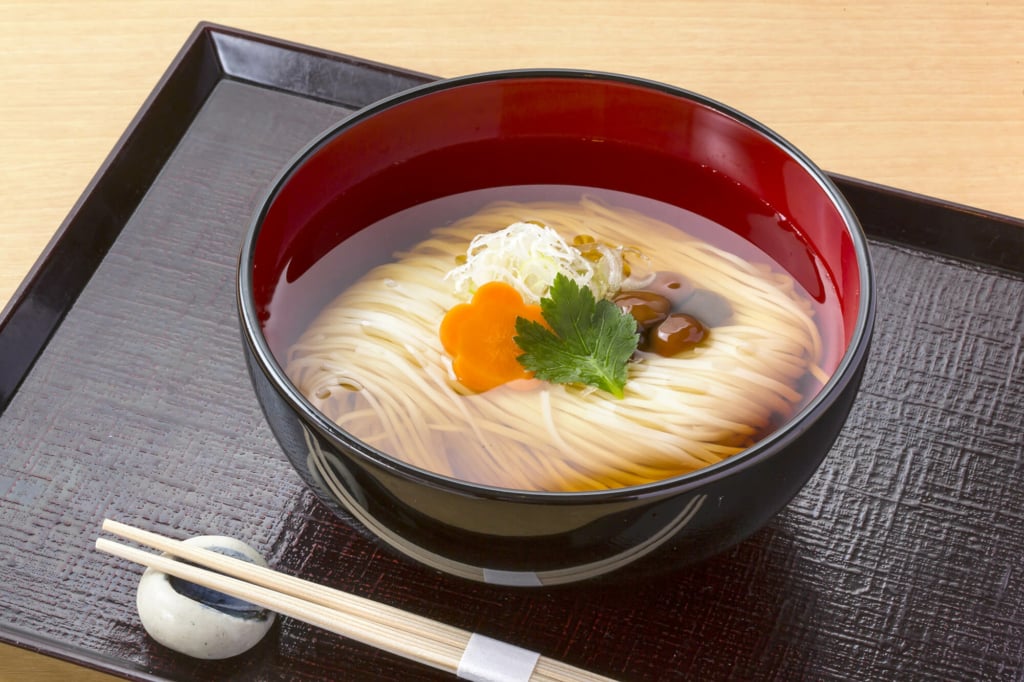
Inaniwa udon is from the Akita prefecture. It is a thin and flat noodle, around 2-3mm in width. Unlike Sanuki udon noodles, which are made by cutting with a knife, Inaniwa noodles are stretched, and rolled by hand. The colour is also a bit yellowish thanks to the addition of starch. Inaniwa udon is usually produced and sold as a dry noodle as opposed to fresh.
Goto udon (五島うどん)
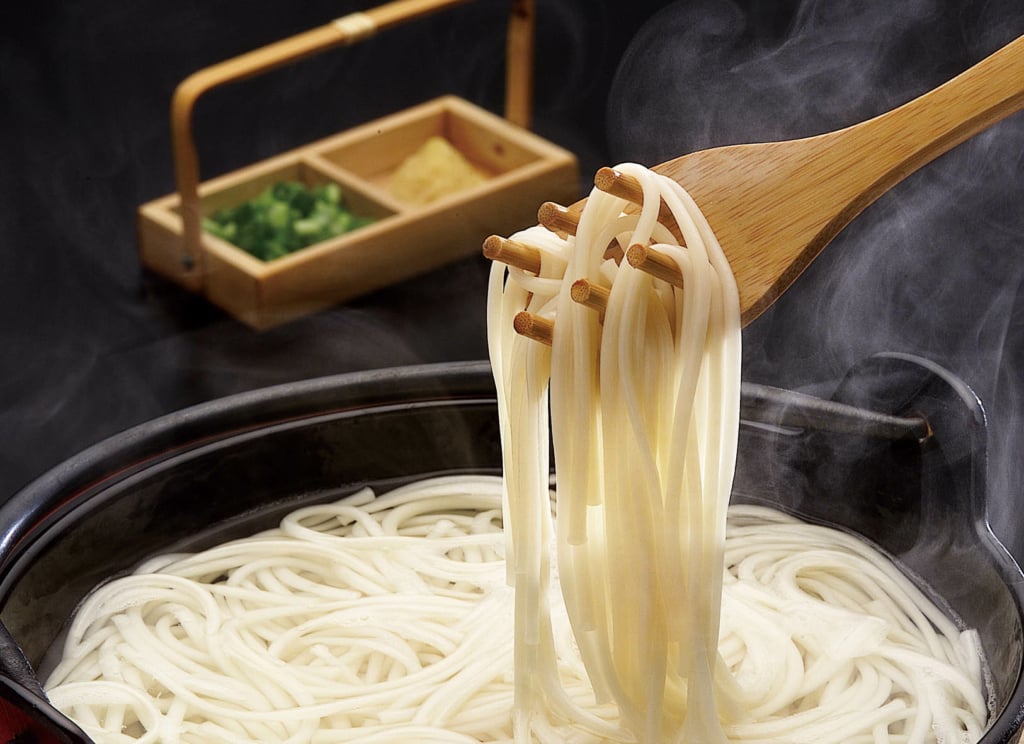
Goto udon is from the Goto islands in Nagasaki prefecture. These noodles are characterized by their skinny round shape (approx. 2mm in diameter), and firm springy texture. Similar to Inaniwa udon, Goto udon is made by being stretched and rolled by hand as opposed to cut by a knife. One unique ingredient added to Goto udon is a local camelia oil, which is used during stretching process to smooth the surface and prevent the noodles from sticking. Goto udon is also usually sold as a dry noodle.
Other types of udon
A couple other notable udons are Mizusawa udon(水沢うどん) from Gunma Prefecture, and Himi udon (氷見うどん) from Toyama Prefecture. There are a million other local udon types; you can see a pretty full list on Wikipedia Japan’s udon page
Soba noodle types
Soba noodles are often categorized by the percentage of buckwheat flour (relative to binding ingredient).
The main percentages types are 100%, 90%, and 80% (also known as “28 soba”). Of course, you can also find lower percentages. Generally, the cheaper the soba is, the less amount of actual buckwheat flour is used. The price is not because buckwheat flour is much more expensive, but because of the added time/skill needed to make the noodles with less binding ingredient.
100% buckwheat soba / “ju-wari” or “to-wari” soba (十割蕎麦)
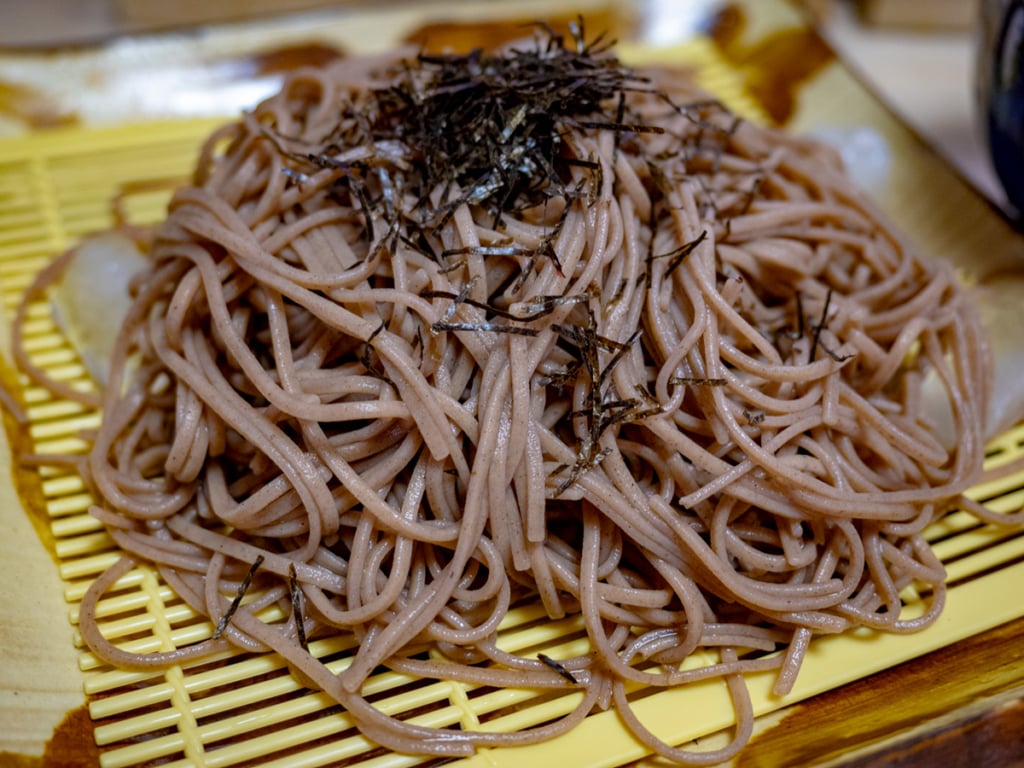
“Ju-wari” — or 100% soba — is made of only buckwheat flour and water, with no additional binding ingredients. How is this possible? One method used is to first gelatinze a small portion of buckwheat flour with hot water, and use that as the binding agent.
Using hot water may damage the unique flavour/aroma of buckwheat though, so some craftsmen avoid this method. Instead, they only use freshly made buckwheat flour that has been ground by a stone mill at ultra low speeds. Grinding at low speeds introduces minimal heat into the buckwheat flour, which allows it to retain flavour and additional protein needed to form into noodles. The type of buckwheat flour mixture (i.e. from which part of the buckwheat ) is also important to ensure there is just enough protein structure that the noodles can be kneaded.
In any case, making 100% buckwheat soba requires an immense amount of skill/time, and is thus much more expensive.
100% buckwheat soba has the most fragrant buckwheat smell. The noodles are usually cut thicker otherwise they would fall apart. The texture of the noodles is also rougher and chewier than others.
If you’re interested, check out this 100% soba making video: https://www.youtube.com/watch?time_continue=164&v=TKUXuBGwb0Y
90% buckweat soba (九割そば)
90% soba refers to noodles that are made with a ratio of buckwheat flour to binding ingredient of 9 to 1, or 10 to 1. Thus, it contains 90% – 90.9% buckwheat flour, and 9.1% to 10% binding ingredient. 90% buckwheat soba retains much of the fragrance of 100% soba, but is a bit easier to make, and has a slightly smoother texture when eating.
80% buckwheat soba / “Ni-hachi soba” (二八蕎麦)
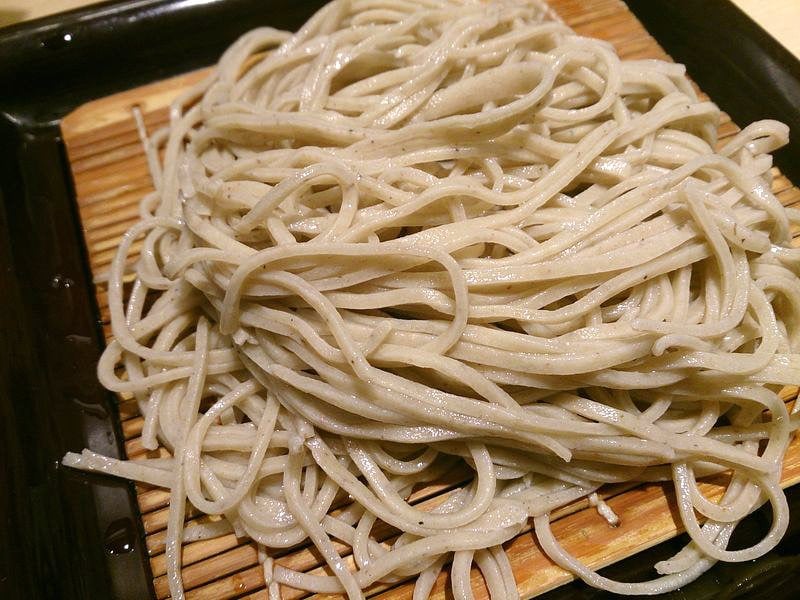
“Ni-hachi soba” (二八蕎麦) — which translates to “28 soba” — refers to soba made with a ratio of binding ingredient to buckwheat flour of approximately 2 to 8 (i.e. 20% binder, 80% buckwheat flour). Sometimes a bit more buckwheat flour is used (up to 83.3%).
“28 soba” is very popular, and many people actually prefer it to 100% soba. The addition of wheat flour gives the noodles an excellent balance between the unique fragrance and flavour of buckwheat, along with the smooth texture that is more similar to udon. The smooth texture makes 80% soba much easier to slurp down compared to 100% soba which is known for its rougher, grindier texture.
Buckwheat flour type
Another important way to categorize soba noodles is by buckwheat flour type (i.e. which part of the buckwheat grain the flour is made from).
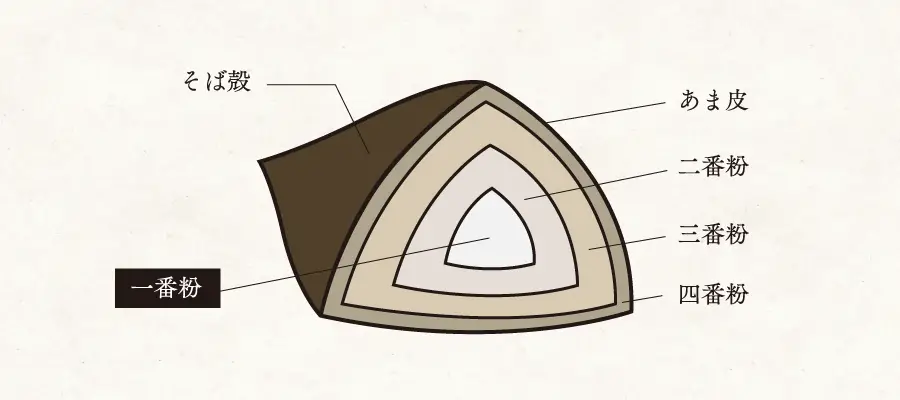
Typically, to produce buckwheat flour for soba noodles, the buckwheat seed is first separated from its shell/hulll, and then ground down in stages.
The very center of the grain is softest, so that breaks down first and turns into flour. From there, the second innermost layer breaks down, then third, and so on. In total, there are four separate flours that can be produced from a single buckwheat grain. The color of the flour gets progressively darker each grinding stage (i.e. inner most layer is white, outer most layer is darkest).
Typically, only the first three flours are actually used for soba noodle making. They are aptly named: First Flour (一番粉), Second Flour (二番粉), and Third Flour (三番粉).
Sarashina / Ichiban flour 更科・一番粉 (i.e. First flour)
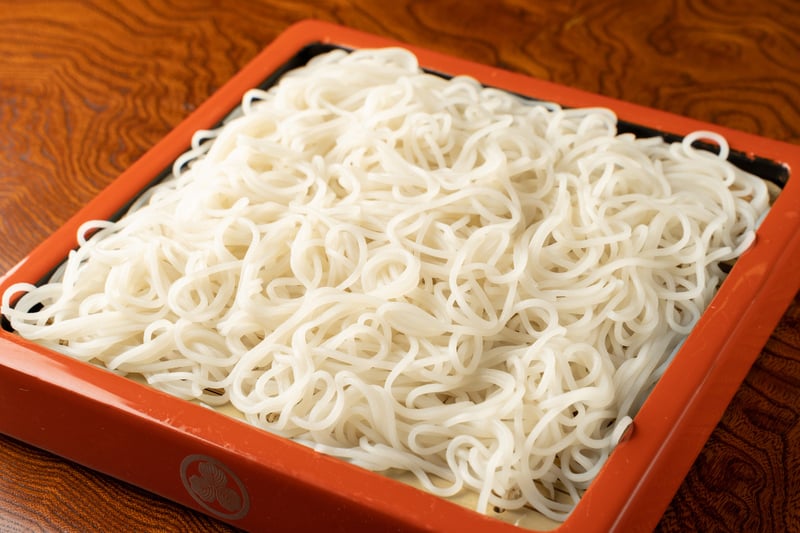
The very core of the buckwheat grain (i.e. the core of the endosperm ) is ground into First Flour (i.e. ichibanko 一番粉).
It is characterized by its nearly pure white color, very soft texture, high starch, and low protein content. Sometimes, the First Flour is further sifted to produce an even purer flour called “sarashina (更科)” flour. Often, the terms are used intechangeably, as I guess most people can not tell the difference.
Since only an extremely small amount of First Flour / Sarashina flour can be obtained from a single grain, it is considered as a super premium / high-end flour.
Soba noodles made with First Flour always use a binding ingredient (i.e. tsunagi), as it does not have enough protein to be formed successfully into noodles by itself. The resulting noodles (often referred to as “sarashina soba“) are pure white with an extremely smooth texture.
It lacks the typical buckwheat flavour and smell you expect from soba, but instead has a tiny bit of sweetness due to its high starch content. The noodles are also much more stretchy compared to others.
Since sarashina soba has a pure white colour and a very light flavour, it is sometimes mixed with other special ingredients like cherry blossoms, green tea, or yuzu to create a special coloured / flavoured soba. Some popular dishes like “three color soba” (三色そば) / “five color soba” (五色そば) make use of this technique.
Second Flour (二番粉) or Middle Flour (中層粉)
The Second Flour is made up of outer parts of the endosperm and the germ of the buckwheat. It has a very light greyish / greenish-yellow color. The Second Flour is often considered to be the best flour for making soba noodles as it offers the greatest balance between the distinct buckwheat flavour, while maintaing a nice, smooth texture.
Third flour (三番粉) or Surface/Outer Layer flour (表層粉)
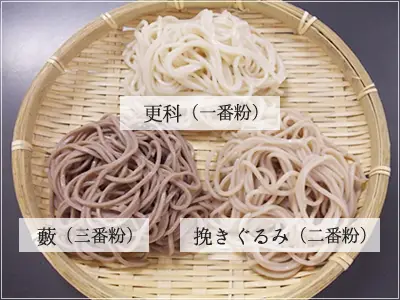
The Third Flour contains parts of the buckwheat endosperm, germ, as well as the seed coating bran layer. It has blackish/ dark greenishe color, and is the most nutritious of the three flours.
Noodles made with just the Third Flour will have a very strong buckwheat flavour, but will also have a rough texture that is typically unwanted. It is generally not suitable for making noodles on its own, so is mixed with second flour, or used for coloring.
Whole grain buckwheat flour (全層粉) / Ground Buckwheat Flour(挽きぐるみ ・ 玄挽きそば))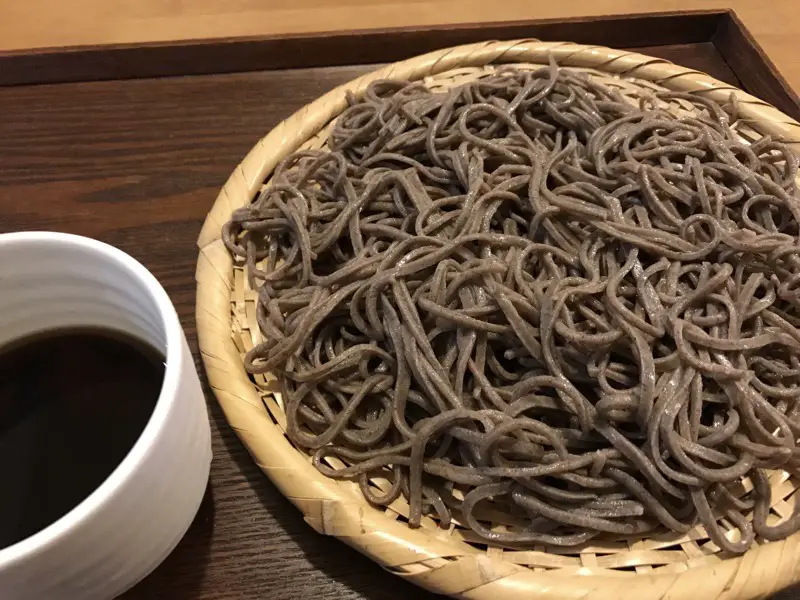
If the flours are not separated, and the whole seed is just ground together, then it is whole grain buckwheat flour. The resulting flour will be very dark, and high in protein and fiber.
The noodles will have a very strong buckwheat flavour/smell, and also a very rough texture. A lot of so called “countryside soba” (田舎蕎麦 ) will use whole grain buckwheat flour. Some people prefer soba made with whole buckwheat flour, as it has the most intense “soba” color/smell/taste.
Other soba types
There are a ton of other ways to classify types of soba noodles — by manufacturing method (i.e. handmade, handmade-style, machine made); origin of buckwheat (Japan, China, etc.); time of year the buckwheat was harvested; and the hundreds of local Japanese regional variations.
Types of dishes
Ramen, udon and soba are served in a variety of ways. Here are some popular examples of each:
Types of ramen noodle dishes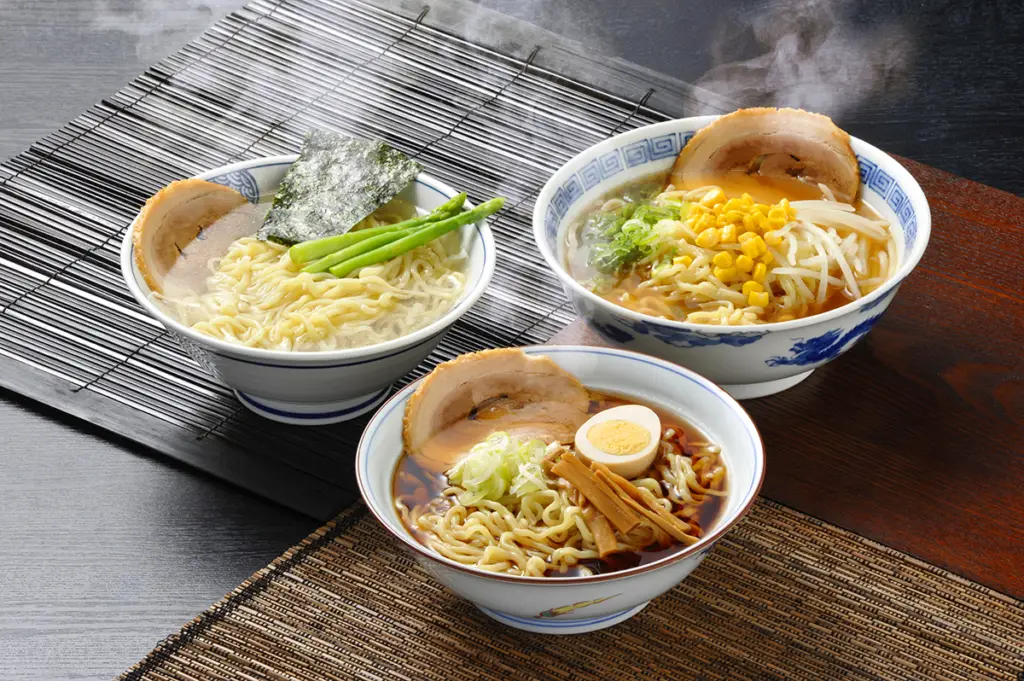
The most common way to serve ramen noodles is in a flavoured soup with various topppings (i.e ramen).
The soup broth can be made of an infinite number of things depending on the individual shop’s recipe. Some common ingredients include pork / beef / chicken bones, bonito flakes, kelp, mushrooms, various vegetables, onions, garlic, and ginger.
The broth is then usually mixed with a sauce called called “tare” (たれ) to create different flavoured soups like shoyu and miso.
Various toppings are also added. The type of toppings varies heavily from region to region and shop to shop. Some common toppings include char-siu (roast pork), green onion, boiled eggs, menma (bamboo shoots), nori (dried seaweed), and various vegetables.
There are an infinite number of types, variations, and categorizations of ramen. Sometimes, ramen is categorized by the region it is from (i.e. Sapporo ramen); sometimes by its toppings (i.e. chashuu ramen); sometimes by flavour (i.e. miso ramen); or sometimes by combination of everything (i.e. Sapporo miso chashuu ramen).
The most common way to categorize ramen dishes is probably to use the soup flavour. Here are the big four main types you will find most often:
1. Shoyu ramen 醤油らーめん (i.e. soy sauce ramen)
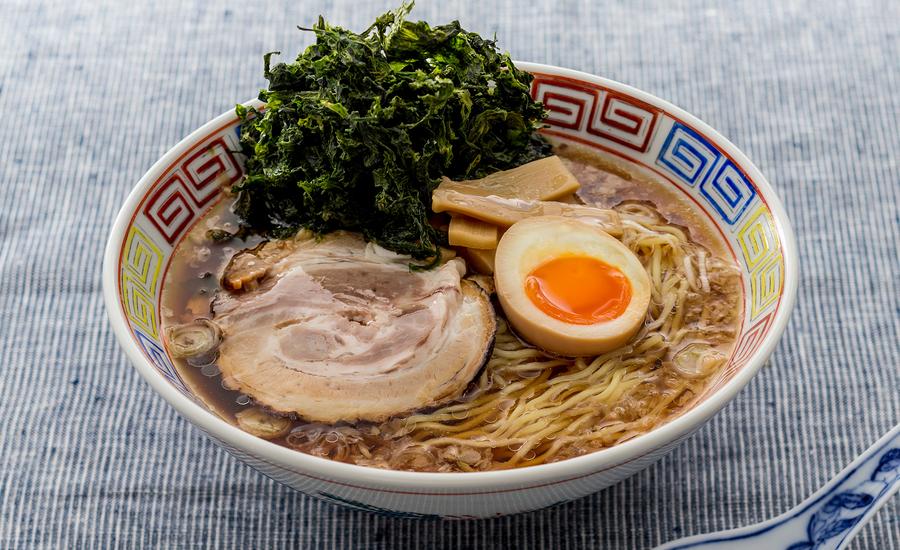
Shoyu — which means soy sauce — is the original “Japanese style” ramen created by the first ramen shop in 1910. Shoyu ramen is considered as the most basic form of Japanese ramen, but can take on many variations depending on the broth, tare, and toppings used. The noodles are usually curly/wavy, but not always. Many local/regional specialty ramen are a variation of shoyu ramen.
2. Shio ramen 塩ラーメン (i.e. salt ramen)
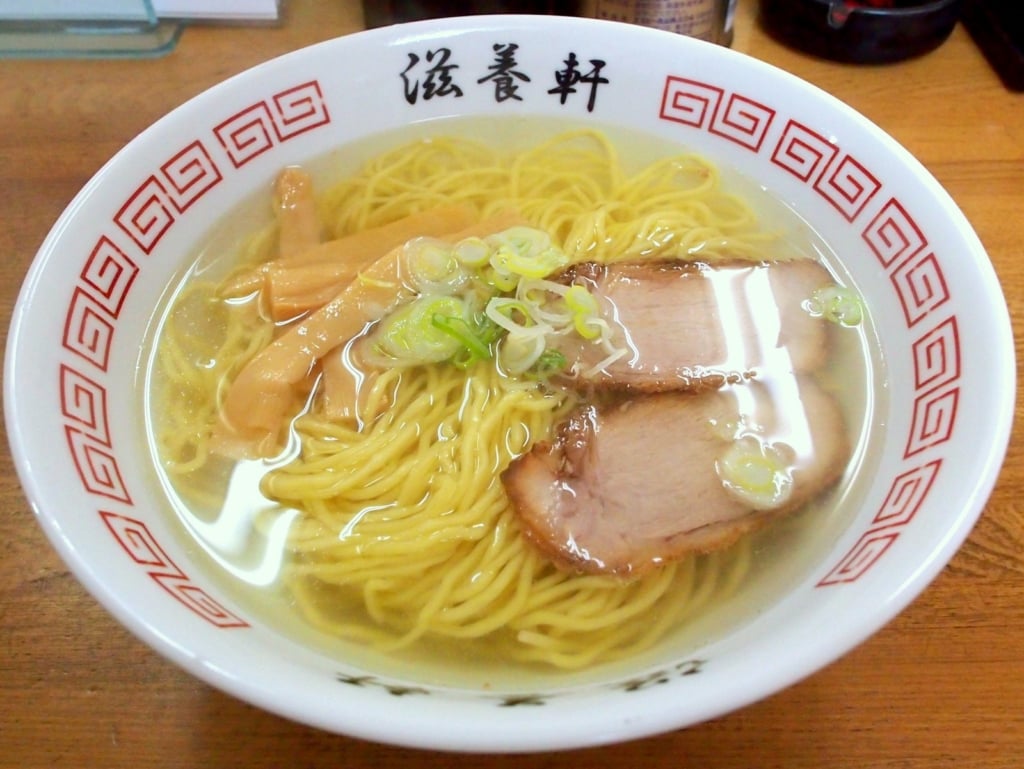
Shio ramen has a soup base where the broth is mainly just seasoned with salt. It has a lighter taste compared to the other main soup types. Shio is the oldest type of ramen, and is the closest version to the original Chinese ramen that was brought to Japan over 100 years ago. Hakodate ramen — named for the city in Hokkaido prefecture — is the most famous variation of shio ramen. Shio ramen typically uses straight noodles.
3. Miso ramen 味噌ラーメン
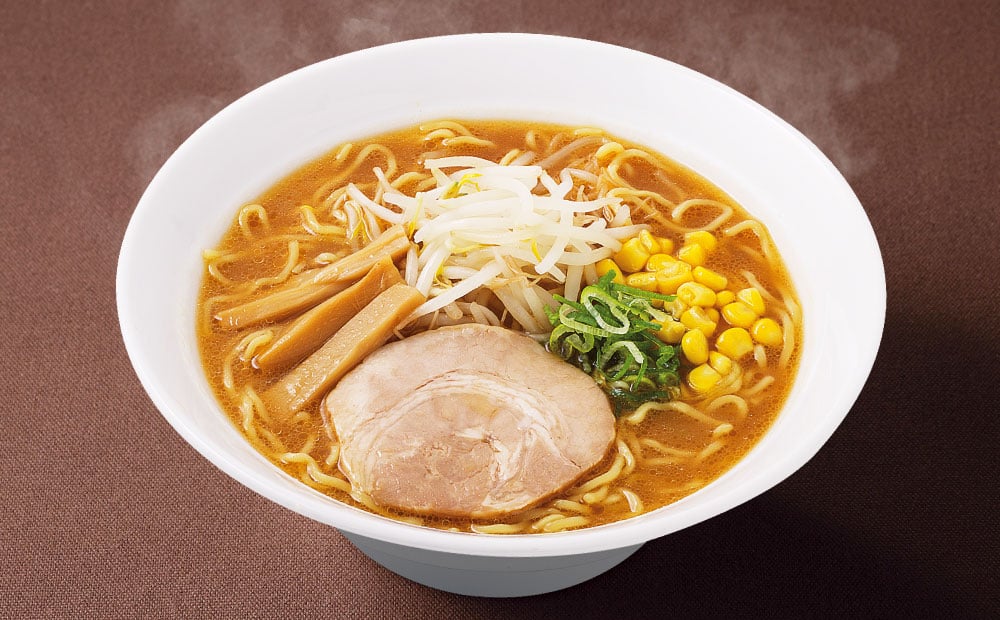
Miso ramen has a rich, umami filled soup thanks to the addition of … miso . It was invented in Sapporo in the 1950s, and is considered as a relatively new style of ramen. There are hundreds of types of miso, so there are also many variations of miso ramen. The noodles used are usually on the thicker and curly/wavy side.
4. Tonkotsu ramen 豚骨ラーメン (i.e. pork bone broth ramen)
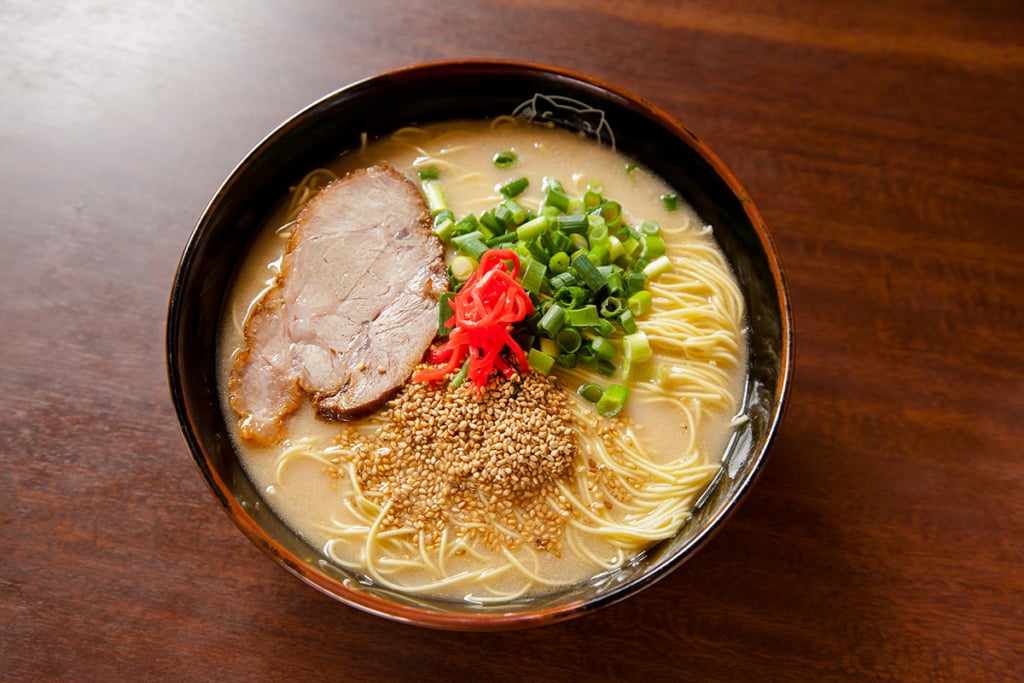
Tonkotsu ramen is any ramen that uses a pork bone broth. The broth is made by boiling pork bones (and other ingredients) over high heat for a very long time. It is characterized by its very thick texture, rich taste, and cloudy appearance thanks to the bone marrow and collagen that dissolved into the broth while cooking.
The broth is often combined with other sauces (i.e. tare) like miso to create the flavours such as “tonkotsu miso ramen” (my personal favourite). Tonkotsu ramen usually uses very thin, dry noodle that is better for absorbing the soup. In some shops, the noodles used are actually somen noodles, not the typical ramen noodles. This makes categorizing everything very confusing.
Tonkotsu ramen was invented in present day Fukuoka, Kyushu. It is often referred to as “Hakata” ramen, which is the original name of the Fukuoka area.
Non-soup ramen dishes — Yakisoba, Tsukemen, and other
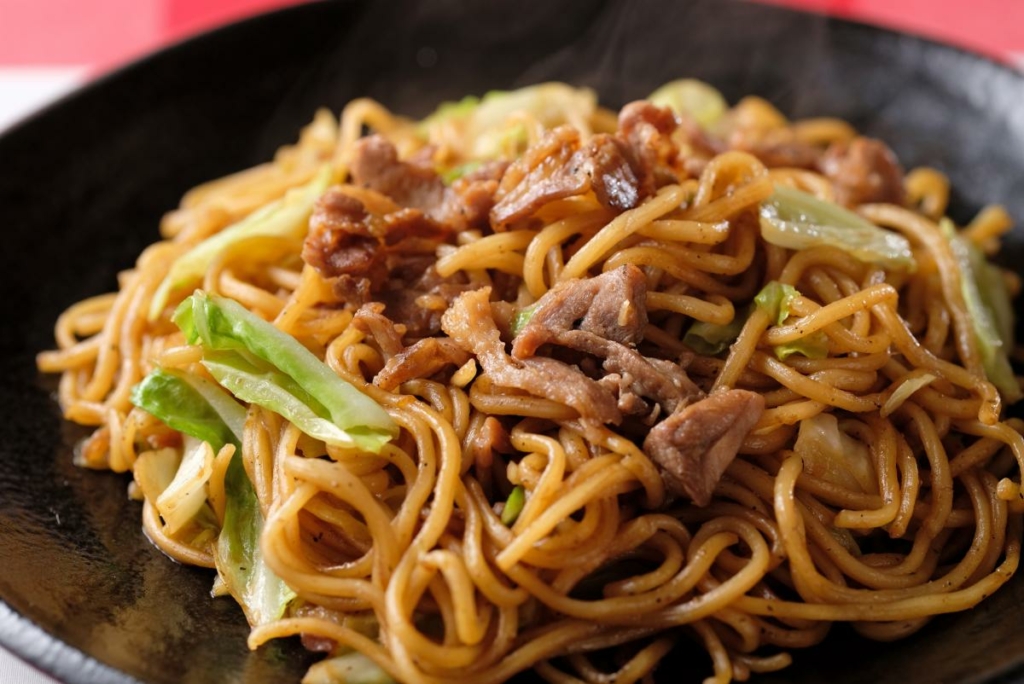
There are also many ramen noodle based dishes that are not served in soup.
Tsukemen (つけ麺) is a dish where cold ramen noodles are served separated from the soup, and eaten by dipping the noodles in the soup. Yakisoba (焼きそば) is a popular stir fried ramen noodle dish. It is never made with soba noodles (i.e. buckwheat noodles), as the name may imply. Hiyashi-chuuka (冷やし中華), or chilled/cold ramen, is a popular summer time dish where cold ramen noodles are served together with various toppings and a sauce/dressing. Sort of like a ramen noodle salad?
Types of udon dishes
Udon is cooked and served in huge variety of ways. It can be served hot or cold (or a combination), depending on the season and regional preference. Many regions in Japan also have their own udon specialty dish made with their own unique ingredients.
Below are a few of the common udon dishes you will find:
Kake udon (かけうどん)
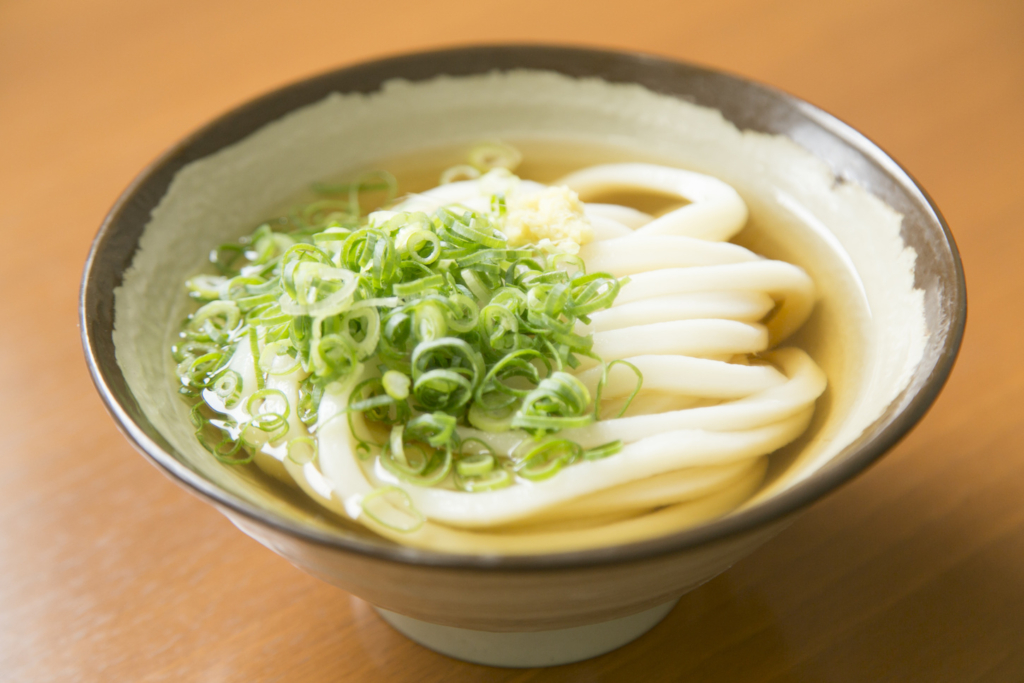
The most basic, and popular udon dish is known as “kake udon” (かけうどん). In this version, the cooked udon noodles are served in a simple dashi broth. It is usually topped with green onions and/or ginger. Most restaurants will also have side dishes or other custom toppings you can add like tempura, egg, fried tofu, radish, etc.
Kake udon variations and other soup-based udons
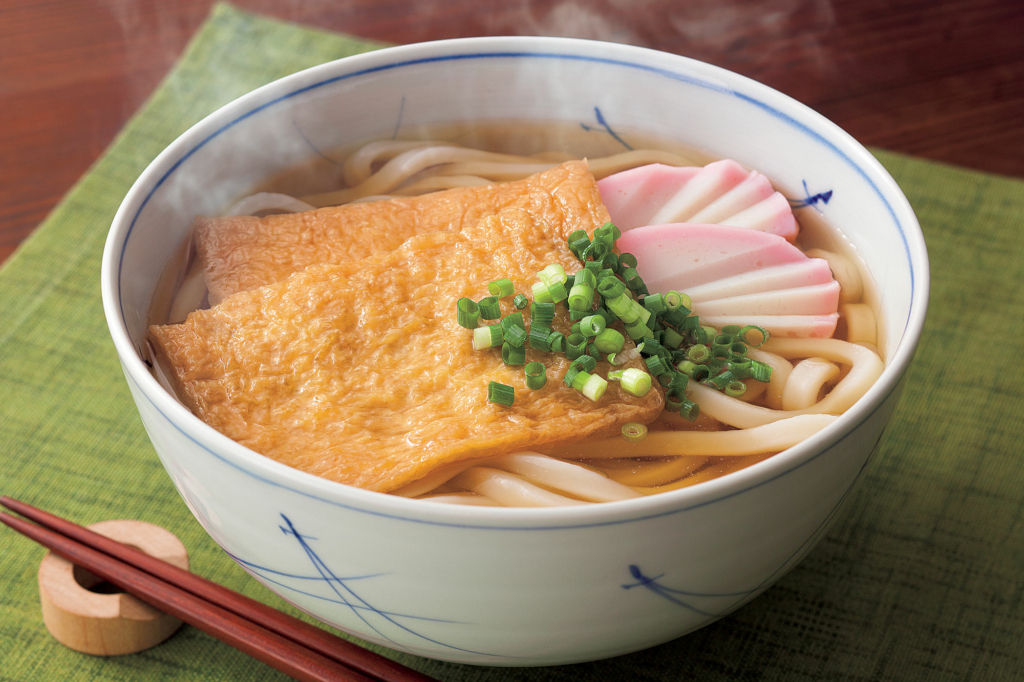
Some other popular versions/variations of “udon in soup” include kitsune udon (i.e. kake udon with fried tofu on top), tanuki udon (i.e. kake udon with tenkasu/fried tempura flour bits), tempura udon, and niku udon (i.e. kake udon with meat — most commonly beef).
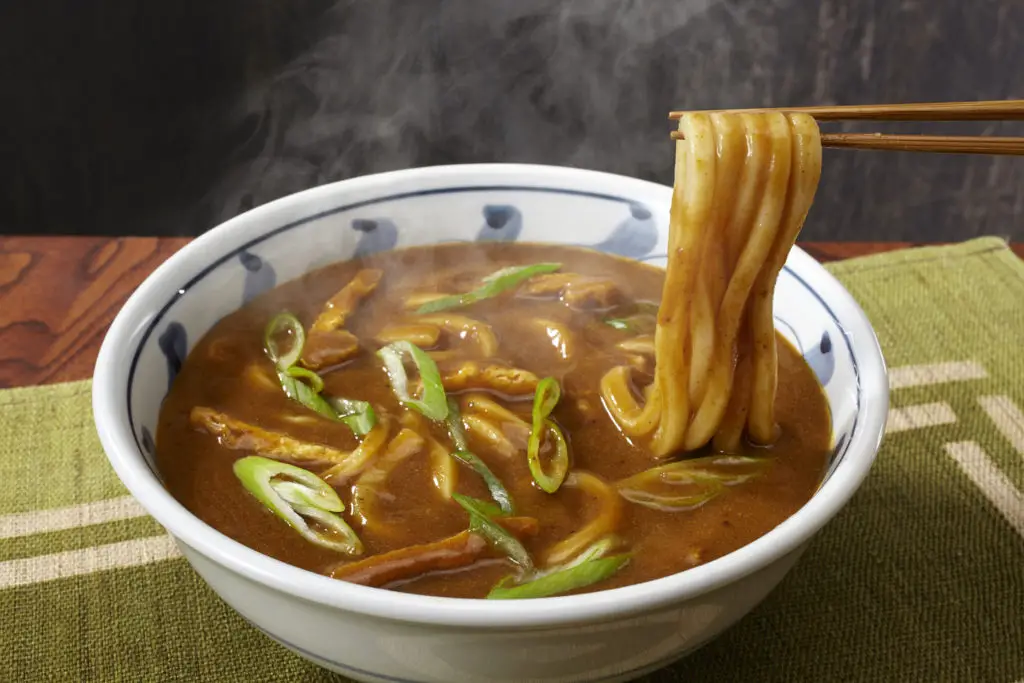
“Curry udon” is another very popular version, where the udon is served in a soupy curry.
Non-soup udon dishes
“Bukakke udon” is udon that is cooked, chilled, then has sauce poured over it.
“Zaru udon” is the most popular cold udon dish. The udon is boiled, drained, chilled, and served on a zaru (i.e. bamboo platter) with a dipping sauce on the side. ”
Yaki udon” is stir fried udon.
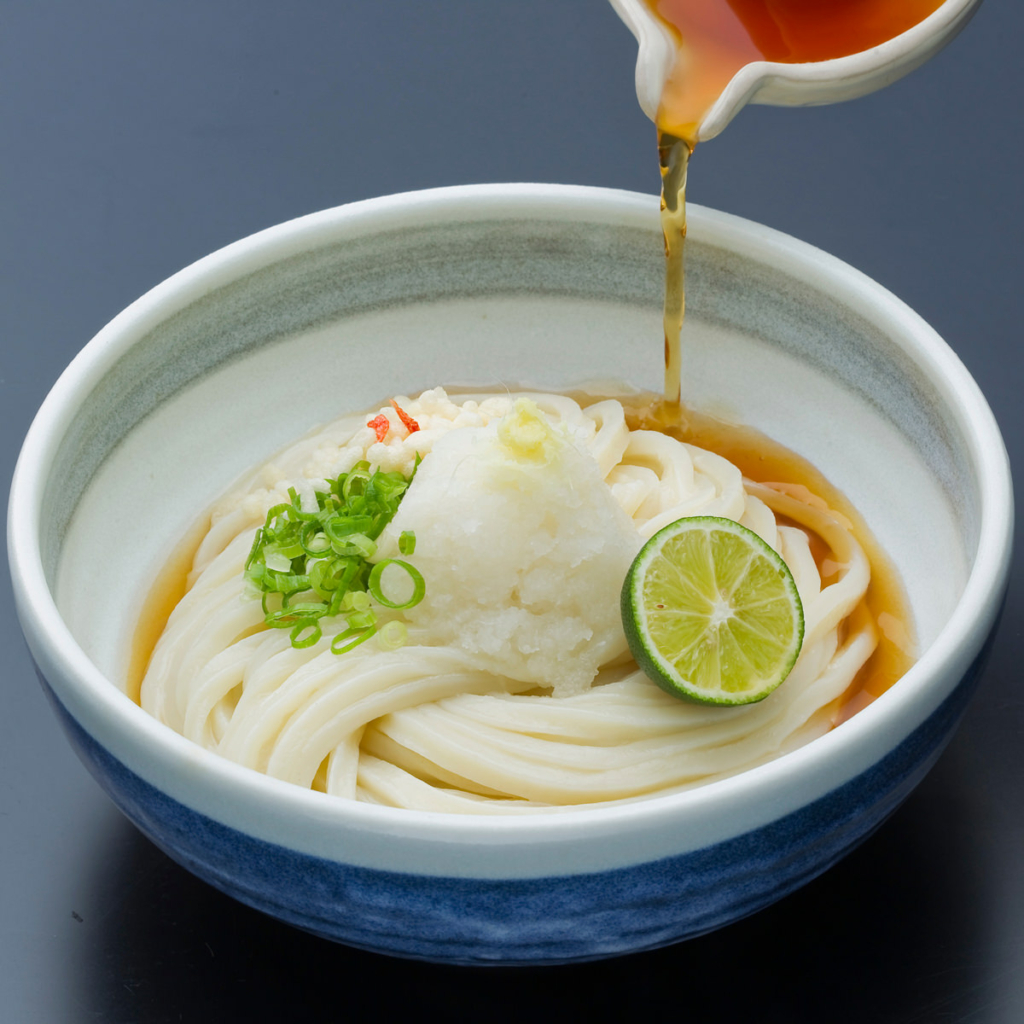
There are hundreds of other variations and styles of cooking and serving udon. Many regions in Japan also have their own udon specialty dish.
Types of soba dishes
Soba shares many of the same dish types with udon. Usually, the only difference is that the udon noodles are replaced with soba noodles.
You will often find soba restaurants that sell udon, and vice versa. Some dishes are more popular depending on if soba or udon is used. For example, “zaru soba” is much more popular than its udon counterpart “zaru udon”.
Here are some more common soba dish types that have an udon counterpart:
Soba dishes similar to udon
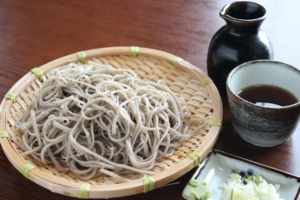
Zaru soba ( ざる蕎麦 ) is chilled soba that is traditionally served on a bamboo colander (i.e. a zaru) along with a simple dipping sauce/broth and various condiments (wasabi, green onions, etc.). Zaru soba is most popular to eat in the hot summer time. Sometimes it is also called mori soba(盛り蕎麦).
Originally, zaru soba became popular because soba would easily dissolve or become soggy if left in soup (due to lack of gluten in buckwheat flour). So, there was some genius in the Edo period that decided to serve the noodles separated from soup, and the rest is history.
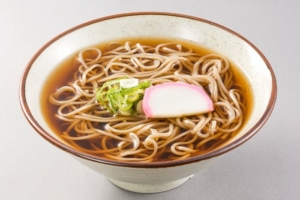
Kake soba is simply soba noodles served in a simple hot broth. There are a ton of variations depending on ingredients and toppings used. The most basic topping is chopped green onions. Kitsune soba is kake soba with a fried tofu on top. Tanuki soba has fried tempura flour bits on top. Tempura soba has various types of tempura on top (shrimp is the most common). Tororo soba has grated yam (i.e. tororo) and egg on top. Many regions in Japan also have their own specialty versions using local ingredients/ toppings.
New Year’s soba (Toshikoshi soba 年越しそば)
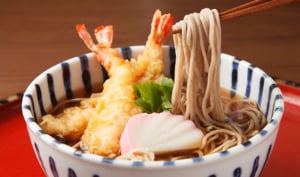
Toshikoshi soba is soba that is eaten on New Year’s Eve. It is said to bring good luck and health for the new year, as well as cut off all the bad stuff that happened over the previous year. There is no standard as to how it is served. Typically it just depends on what is popular in the region.
For example, in Tokyo, toshikoshi soba is typically tempura soba (shrimp tempura is most common). In Hokkaido, it is usally herring soba.
A 2012 study showed that 57.6% of Japanese people eat Toshikoshi soba on New Year’s Eve!
Regional soba dishes
Soba also has a ton of local regional dishes. The so called “big 3” regional sobas are Izumo soba, Wanko soba and Togakushi soba.
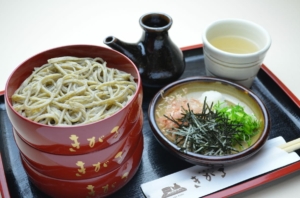
Izumo soba is from Izumo region of Shimane prefecture. The noodles are made with 100% wholegrain buckwheat, and served in a couple of ways – wariko and kamaage.
Wariko soba is served by stacking three bowls of chilled soba noodles on top of each other (with no soup). You eat one bowl at a time, adding soup and whatever toppings you want.
Kamaage soba is noodles that are served in the same water that it is boiled in. You can add flavored soup, and other condiments. This is different from other typical soup-based soba (like kake soba), where the noodles are boiled, drained, rinsed, then added to a separate broth.
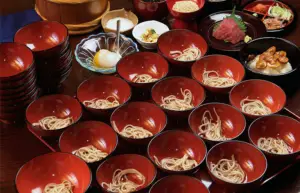
Wanko soba literally means “bowl soba”, and is from Iwate prefecture.
It is a very unique way of serving/eating soba. Basically, soba noodles are served in bite sized portions (i.e. one-slurp sized). As you eat, the waiter/waitress will stand beside you and keep refilling your bowl with mini soba portions until you do not want to eat anymore.
It is very strange/unique/ridiculous to see it for the first time. The exact portion size depends on the restaurant, but about 10-15 serving of wanko soba is equivalent to a standard bowl of kake soba. Many restaurants are “all-you-can-eat” style, and it is not uncommon for the average person to eat over 50 servings!
There are also annual Wanko soba eating competitions, with February 11th being the official “Wanko Soba Day”. There are also plenty of YouTubers testing how much they can eat. Check out this girl eating 600 bowls???!
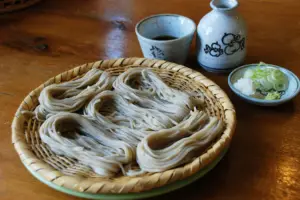
Togakushi soba is from the Togakushi area in Nagano prefecture.
The noodles are made using 100% wholegrain / ground buckwheat flour. The dough is first stretched / rolled into a circle before being cut into noodles ( typical soba is first stretched into a square ).
To serve Togakushi soba, the noodles are separated into bundles called “bocchi” ( ぼっち ) and served on a bamboo colander (i.e. zaru). The number of bundles depends on the shop, but most commonly 5 or 6. It is typically eaten together with Togakushi radish (grated), and other local vegetables.
There are a million other types of soba dishes. Check out a list on Wikipedia Japan’s soba page.
Restaurants / Price range
Ramen restaurant prices
There are nearly 50,000 ramen shops throughout Japan. These ramen restaurants range from small stands with a just a few bar seats, to large, full-service restaurants. Ramen is typically looked at as a common food that can be eaten fairly frequently without breaking your budget. There are some expensive shops, but even these will seem reasonably priced compared to typical higher end spots like sushi restaurants.
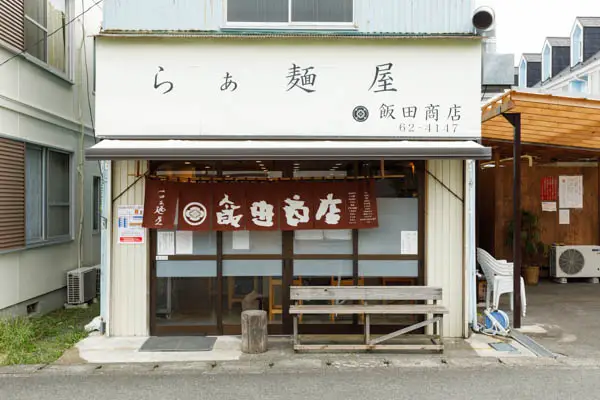
The price for a bowl of ramen can range greatly by shop. At a budget place (i.e. cheap chain restaurant), a standard bowl of ramen — without extra toppings or side dishes — averages around just 447yen ($4 USD).
At a top-10 rated ramen restaurant, the average price for the same standard bowl is about 789yen ($7 USD). Even at the number one ranked ramen restaurant in Japan (according to Tabelog), a standard bowl of shoyu ramen is still just 850yen ($7.45 USD).
Adding extra toppings, noodles, or side dishes will of course bump the price up. Generally, the most expensive bowl of ramen you will find is around 1500 – 2000 yen ($13-$18 USD).
Overall, throughout all of Japan, the average price for a standard bowl of shoyu ramen is around 600yen ($5.50 USD).
(Sources: https://kurawaka.com/syokuhin/ramen-nedan-souba, https://jpmarket-conditions.com/2102/)
Udon restaurant pricing
There are over 24,000 udon restaurants in Japan (according to Tablelog). Udon is typically known as a cheap food option, although the price can range widely by type of shop.
Low cost shops or takeaway stands can be very cheap, with the average bowl only costing 300-600 yen. Most specialty udon restaurants range from around 600-1000 yen.
Higher end shops — usually ones that make udon fresh by hand — can cost over 2000 yen per bowl.
Overall, the average cost of a bowl of (kitsune) udon in a restaurant is 594 yen ($5.35).(Sources: 1; 2 )
At Suzaki Shokuryohinten 須崎食料品店 — the top ranked udon shop in Japan — a standard bowl of udon starts at just 230 yen ($2 USD) before toppings. It is a takeout only though.
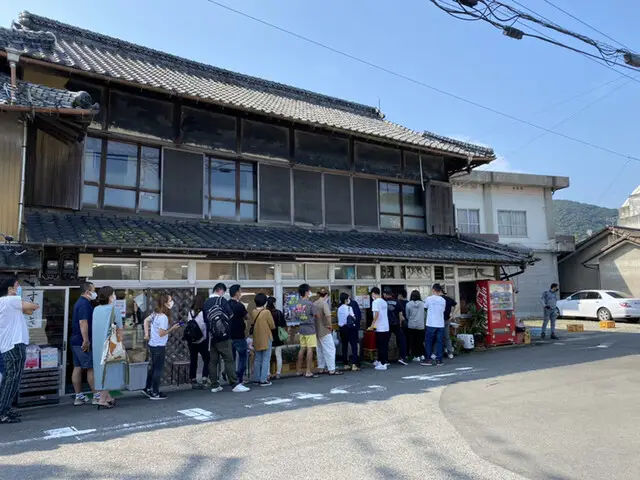
Soba restaurant prices
There are around 25,000 soba restaurants in Japan. Soba can be found served as a cheap commoner’s dish, as well as a high class dish.
Cheap soba restaurants or takeaway stands sell soba for 300-600 per bowl. Most mid-range soba specialty shops range from around 600 to 1,000 yen.
There are also plenty of fancy higher-end restaurants that cost well over 2,000 yen for an order of soba.
Throughout all of Japan, the average price for a plate of zaru soba is 631 yen.
Nutrition / Health
Ramen nutrition
Ramen noodles are mainly carbohydrates. They also contain some protein, vitamin B1/B2, and fiber, but in very small amounts.
Calorie wise, ramen noodles contains about 149kcal per 100g. This is not very high (rice is about 168kcal/100g), but a lot more calories are typically found in the soup and toppings. A typical bowl of ramen is probably around 500kcal. (source)
The main health downside of eating a typical bowl of ramen is that it contains high amounts of salt and not much vitamins. The salt is mainly found in the soup, so it is recommended to not drink all of it if you are watching your health.
To improve vitamin intake, you should try to add more vegetable toppings, or side dishes. Or, just make sure you eat more vegetables with your next meal .
Udon nutrition / health benefits
The main ingredient of udon noodles is also carbohydrates (approx. 20g / 100g serving), which makes it easy to eat and digest.
Udon is not a significant source of fat or protein. Unfortunately, it is also not a significant source of any other vitamins or minerals, although it does contain trace amounts of vitamin B1, niacin, pantothenic acid, and minerals such as sodium, copper and selenium. (Source)
Udon is considered very low in calories (105kcal / 100g) compared to all other noodle types. In order to accurately measure the overall nutrition of udon, you must also factor in the soup, toppings, and other side dishes.
Some popular toppings like deep fried tempura can add protein, but unwanted calories and saturated fat. Healthy toppings like wakame (seaweed) can add needed minerals and fiber. Many soups can be high in salt or sugar, so you must also take this into consideration.
Soba nutrition / health benefits
Soba noodles are generally considered to be quite healthy.
This is mainly because soba uses buckwheat flour instead of plain wheat flour. Of course, you need to check the percentage of buckwheat flour the soba noodles use, as well as which buckwheat flour type is used (i.e. 1st, 2nd, 3rd, wholegrain).
Soba made with 100% whole grain buckwheat flour is the most nutritious, while soba that only uses First Flour (or Sarashina) contains the least amount of nutrients.
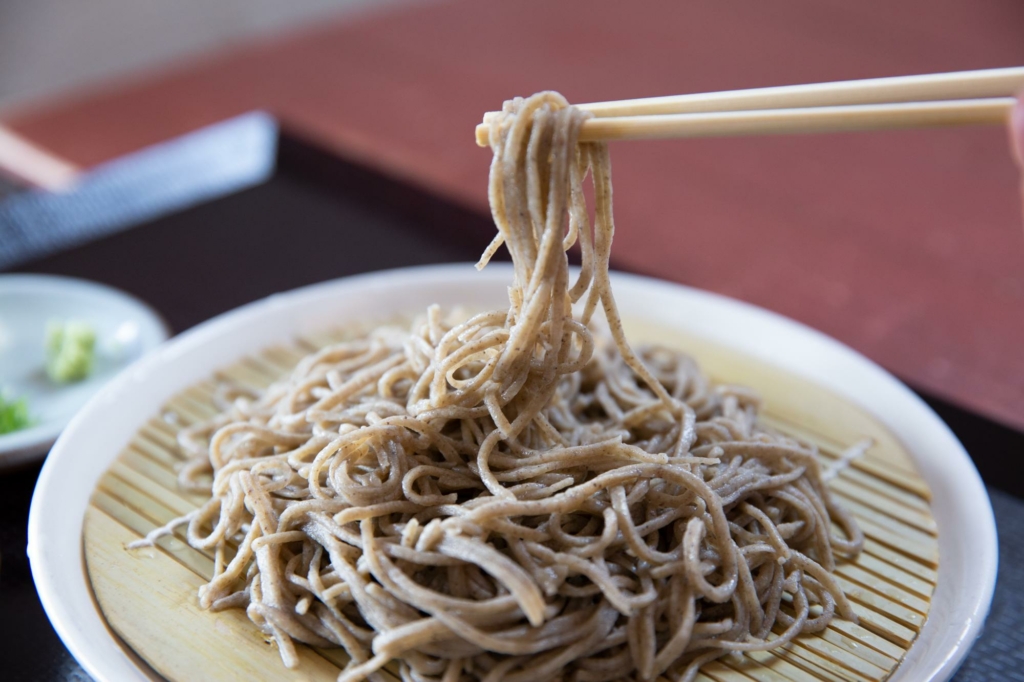
Buckwheat flour contains many nutrients, vitamins and minerals that are beneficial to your health.
It has plenty of Vitamin Bs (B1, B2, B6), which helps relieve fatigue, and are good for your hair and skin.
Minerals like calcium, magnesium, and phosphorus promote healthy muscles and bones. Potassium is good for your kidneys. Antioxidants like rutin help lower your blood pressure, and is also good for your skin. Buckwheat is also high in fiber which helps your digestion and intestinal environment. (i.e. no more constipation!).
Soba is one of the few non-meat, vegan friendly foods that is considered a complete protein (i.e. it contains adequate amounts of all 9 essential amino acids). Most notably is Lysine, which is good for your bones, burns fat, and….is also good for your skin.
Not all is good news though. Soba still contains a relatively high amount of sugar / carbs. This is especially true if it is not made with 100% buckwheat flour.
Noodle Comparison Chart
For your convenience, here is a chart that compares all the main points mentioned in this article between the big three Japanese noodle types — ramen, udon, and soba.
| Ramen | Udon | Soba | |
|---|---|---|---|
| Overall popularity ranking (in Japan) | 1st | 2nd | 3rd |
| Google Search volume (avg monthly) | 6,120,000 | 823,000 | 550,000 |
| Number of restaurants in Japan (via Tabelog) | 49,000 | 24,000 | 25,000 |
| History / Origin | – China – modern version est. 1910 |
– China – modern version est. Edo Period (1603 – 1868) |
– Japan – modern version est. Muromachi Period (1336 to 1573) |
| Ingredients | Wheat flour, water, salt, kansui | Wheat flour, water, salt | Buckwheat flour, water; binder (tsunagi) – possible binding ingredients: wheat flour, yam, egg, etc. |
| Popular Noodle Types | – no offical types; all ramen noodles referred to as “Chinese Noodles” in Japan – width, size, depends on soup / dish type |
– Sanuki udon – Inaniwa udon – Goto udon |
– 100% buckwheat soba – 80% buckwheat soba (i.e. ni-hachi soba) – Sarashina soba (i.e. first flour ) – Wholegrain buckwheat soba |
| Popular Dishes | – Shoyu ramen – Shio ramen – Miso ramen – Tonkotsu ramen |
– Kake udon, kitsune udon, tanuki udon, tempura udon, niku udon – Curry udon – bukakke udon – yaki udon |
– kake soba, zaru soba, tempura soba – New Year’s soba (i.e. Toshikoshi soba) – Izumo soba – Wanko soba – Togakushi soba |
| Restaurant pricing (avg) | 603 yen | 594 yen | 631 yen |
| Nutrition / Health | – mainly carbohydrates | – mainly carbohydrates – very low in calories |
– Vitamin Bs (B1, B2, B6), – Minerals like calcium, magnesium, and phosphorus, Potassium – Antioxidants like rutin lower blood pressure,. – high in fiber – high in protein – good for skin |
Conclusion
You now know more than you ever wanted to about the main three Japanese noodle types — ramen, udon, and soba.
We looked at each noodle’s popularity, history, ingredients, types, dishes, nurtrition, and more.
Overall, ramen is the most popular/famous type in Japan, but more so as an entire dish (i.e soup, toppings), instead of the noodles themselves (which are called “Chinese noodles” in Japan).
On the other hand, udon and soba have a much longer history in Japan. They are famous for specific noodle types like Sanuki udon, or “ni-hachi” soba. Soba and udon also share many of the same dishes like kake soba/udon, or zaru soba/udon.
I hope that you found some useful information in this article. I definitely learned a lot about the difference between ramen, udon, and soba.
If you have anything to add, please contact me, or leave a comment below!
Sources:
#### ramen:
https://ja.wikipedia.org/wiki/%E3%83%A9%E3%83%BC%E3%83%A1%E3%83%B3
https://jpnculture.net/ramen/
https://www.raumen.co.jp/rapedia/study_history/
https://en.wikipedia.org/wiki/Ramen
#683 「麺の科学(山田昌治著)」②
https://www.olive-hitomawashi.com/column/2020/03/post-9608.html
#### Udon:
https://ja.wikipedia.org/wiki/うどん
https://www.zenmenren.or.jp/
https://www.tablemark.co.jp/udon/udon-univ/index.html
https://www.ku-kai.org/udon.html
日本の三大うどんは「讃岐」「稲庭」、あとひとつご存知ですか?
https://www.goto-udon.jp/about/udon/
#### Soba:
https://ja.wikipedia.org/wiki/%E8%95%8E%E9%BA%A6
https://sobadou.com/sobanorekisi/
https://rekishi-memo.net/japan_column/soba.html
蕎麦(そば)の歴史~そばのルーツを探る~=Sobapedia=
https://hobbytimes.jp/article/20160531a.html
https://toyokeizai.net/articles/-/320624?page=3
https://halc.athuman.com/event/column/food-soba-20180303.html
https://sindan.org/sobawariai/#sec2
https://www.nichimen.or.jp/know/number/05/
http://jiten.kurumaya-soba.com/sobako.htm
https://matsuyaseifun.co.jp/soba/study/type/
http://www.miyamoto-seifun.co.jp/zatsugaku.html
https://www.eonet.ne.jp/~sobakiri/sakuin-ichiran/sakuin-index.html
https://kyoshinan.jp/kyoshinan/juwarisoba2/
https://kireinasekai.net/sobako-tousitu/
https://shiru2.jp/toushitsu/2091/
https://www.olive-hitomawashi.com/column/2017/10/post-550.html
そばの栄養成分や効果効能!スーパーフードと呼ばれる理由は?
https://www.kobayashi-foods.co.jp/washoku-no-umami/soba-nutrition#11